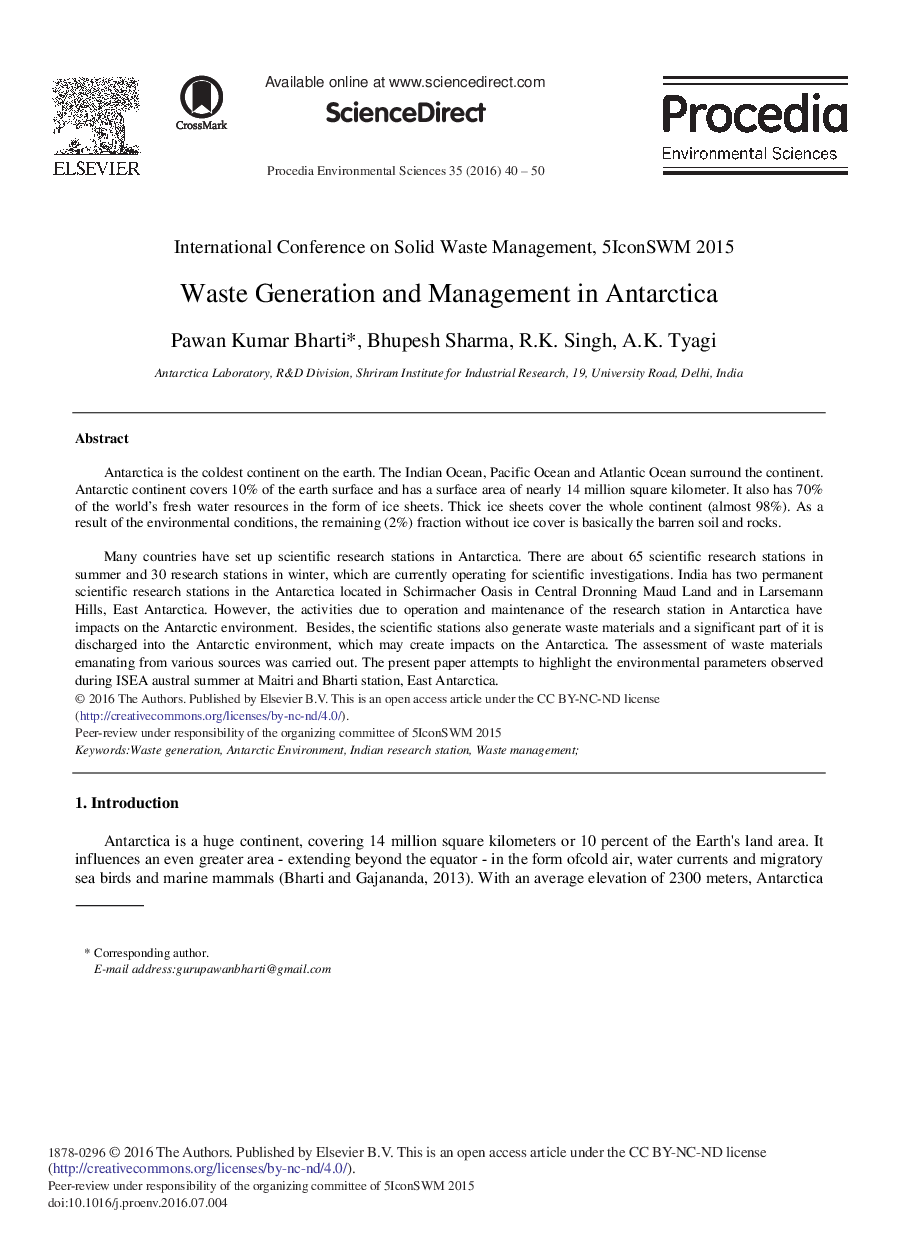| Article ID | Journal | Published Year | Pages | File Type |
|---|---|---|---|---|
| 4401355 | Procedia Environmental Sciences | 2016 | 11 Pages |
Antarctica is the coldest continent on the earth. The Indian Ocean, Pacific Ocean and Atlantic Ocean surround the continent. Antarctic continent covers 10% of the earth surface and has a surface area of nearly 14 million square kilometer. It also has 70% of the world's fresh water resources in the form of ice sheets. Thick ice sheets cover the whole continent (almost 98%). As a result of the environmental conditions, the remaining (2%) fraction without ice cover is basically the barren soil and rocks.Many countries have set up scientific research stations in Antarctica. There are about 65 scientific research stations in summer and 30 research stations in winter, which are currently operating for scientific investigations. India has two permanent scientific research stations in the Antarctica located in Schirmacher Oasis in Central Dronning Maud Land and in Larsemann Hills, East Antarctica. However, the activities due to operation and maintenance of the research station in Antarctica have impacts on the Antarctic environment. Besides, the scientific stations also generate waste materials and a significant part of it is discharged into the Antarctic environment, which may create impacts on the Antarctica. The assessment of waste materials emanating from various sources was carried out. The present paper attempts to highlight the environmental parameters observed during ISEA austral summer at Maitri and Bharti station, East Antarctica.
